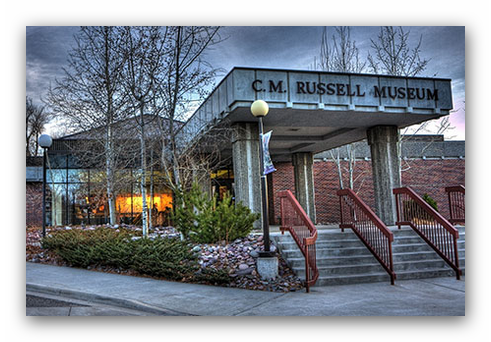Jun 21 2017 - Jan 1 2018
Great Falls, MT
Edward Curtis was born in 1868 and grew up poor in rural Minnesota. His youthful interest in photography led him to construct his first camera at age twelve and learn how to process prints, thus embarking on his lifelong photographic career. At seventeen he apprenticed to a photographer in St. Paul and in 1887 he bought a half interest in a photographic studio and a second camera when his family relocated to Seattle. His success as a portrait photographer gave him the freedom to pursue his love of the great outdoors and this activity brought him into contact with George Bird Grinnell, a noted conservationist and author. Grinnell invited Curtis to Montana to photograph the Blackfeet, an experience that would inform his lifetime of work among the other Native tribes. By 1900, these experiences had led Curtis to embark upon an undertaking that would consume him for the next thirty years. This project was the creation of his greatest artistic achievement, the twenty-volume publication, The North American Indian, a magnum opus that captured the lives and landscapes of Native Americans who were transitioning from their traditional ways of life to life on the reservations. Today this work stands as a landmark in the history of photography, book publishing, ethnography, and the American West.
Selections From The North American Indian by E.S. Curtis will feature 27 of Curtis’ photogravures from his monumental work that feature Montana tribes (Kootenai, Cree, and Blackfeet) and landscapes chosen from the museum’s permanent collection. Over his lifetime, Curtis produced over 40,000 photographs of Native peoples. Curtis’ pursuit was one of salvage ethnography and artistry; his goal being to document and preserve Native peoples’ cultural legacy for future generations by creating a permanent record of their lives in photographs, film, sound, and text. Although competing notions of authority persist in his work, it was ultimately a process of artistic collaboration in which the Native people were active participants and co-creators. To view Curtis’ work in its entirety is to understand its contribution as an aesthetic, cultural, and historical record of enormous importance.
Credit: Exhibition overview from museum website
Whether or not you go, The North American Indian: The Complete Portfolios gathers Curtis’ entire American Indian portfolio into one publication, offering renewed access to and appreciation of his extraordinary achievement, which is as much a precious historical document as a triumph of the photographic form. At the turn of the 20th century, the American photographer Edward Sheriff Curtis (1868–1952) started on his 30-year project to produce a monumental study of North American Indians. Using an approach that was both artistically and scientifically ambitious, he recorded, in words and pictures, the traces of the traditional Indian way of life that was already beginning to die out.
With tireless personal commitment Curtis visited 80 American Indian tribes from the Mexican border to the Bering Strait, gaining their confidence through his patience and sensitivity. His work was printed in 20 volumes between 1907 and 1930 as The North American Indian, but with only 272 copies, originals became extremely rare.
The North American Indian: The Complete Portfolios
Exhibition Venues & Dates
Jun 21 2017 - Jan 1 2018
Great Falls, MT

